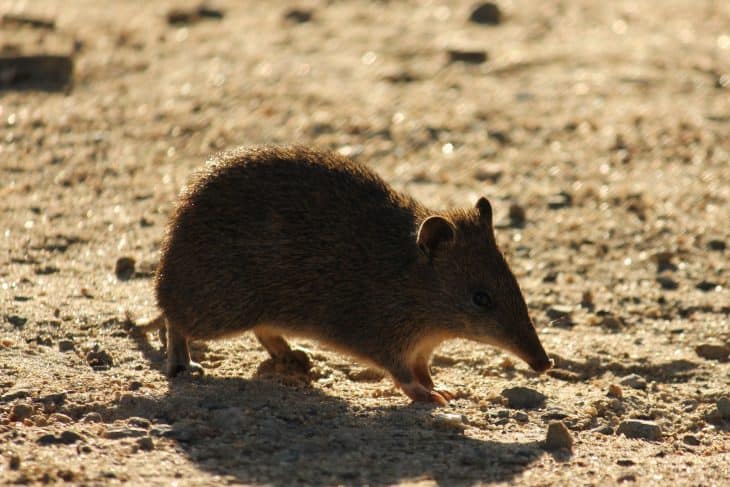
Marsupials are mammals endemic in Australia and the Americas. They give birth to relatively undeveloped young that usually reside in their pouches located on their abdomens. The most known marsupials include opossums, Tasmanian devils, kangaroos, koalas, wombats, wallabies, bandicoots, and the extinct thylacine.
One of the most interesting marsupials is the bandicoot; it’s mostly a small and unique-looking animal that looks like a mix between a pig and a rat. Despite being cutesy in appearance, bandicoots are always in danger as their small size makes them easy targets for predators. Because of that, their species have been reduced to a critical level. Bandicoots are nocturnal animals, and they have developed extreme senses to hunt prey or elude their enemies at night. It is interesting how these marsupials strive for their day-to-day life combating invasive herbivores and clever predators. Check out the facts that we have laid out about this awesome animal.
What is a Bandicoot?
To put it simply, this Australia and New Guinea native is a kind of omnivorous and solitary rat that thrives during the night. Their importance to the ecosystem stems from the fact that they spread fungi spores which greatly affect plant and animal diversity, as well as the composition of forests and woodlands. Currently, their survival is being threatened by habitat loss and predators such as foxes, cats, and dogs.
- Bandicoots are a group of more than 20 species of small to medium-sized, terrestrial, nocturnal marsupial omnivores.
- The name bandicoot is an Anglicised version of a word from the Telugu language of South India which translates as pig-rat.
- People used the word bandicoot to informally refer to any peramelemorph, like the bilby.
- Bandicoots have V-shaped faces, ending with their prominent noses.
- With their well-attuned snouts and sharp claws, the bandicoot is a fossorial digger.
- They have small, fine teeth that allow them to easily chew their food.
- They are endemic to the New Guinea region of Australia, including the Bismarck Archipelago to the east and Seram and Halmahera to the west.
- Bandicoots are nocturnal.
- Bandicoots don’t live particularly long. They live around three years in the wild.
- Bandicoots are marsupials, and mothers raise their young in their pouches.
- The bandicoots take the shortest time for any mammal to gestate. They are usually born after around 12 days.
- Bandicoots, kangaroos, wallabies, and possums have two toes fused together.
- A bandicoot bounds around using its powerful hind legs.
- They reach maturity quickly.
- Bandicoots are omnivores, which means they eat meat and plants.
- The rabbit-eared bandicoots, better known as bilbies, are species of Macrotis. The greater bilby is the largest of all bandicoots.
- Some species of bandicoots are considered to be endangered or critically endangered.
- The long-nosed bandicoot, the short-nosed bandicoot, and the bilby are the most well-known types of bandicoots.
- The long-nosed bandicoot would leave some small, round, and conical holes when it forages at night.
- Bandicoots are rather solitary animals and usually only get together to have babies.
Was this page helpful?
Our commitment to delivering trustworthy and engaging content is at the heart of what we do. Each fact on our site is contributed by real users like you, bringing a wealth of diverse insights and information. To ensure the highest standards of accuracy and reliability, our dedicated editors meticulously review each submission. This process guarantees that the facts we share are not only fascinating but also credible. Trust in our commitment to quality and authenticity as you explore and learn with us.
